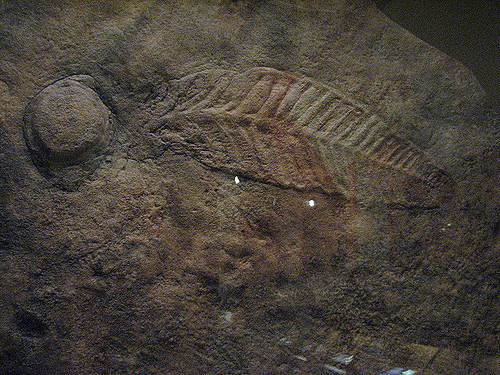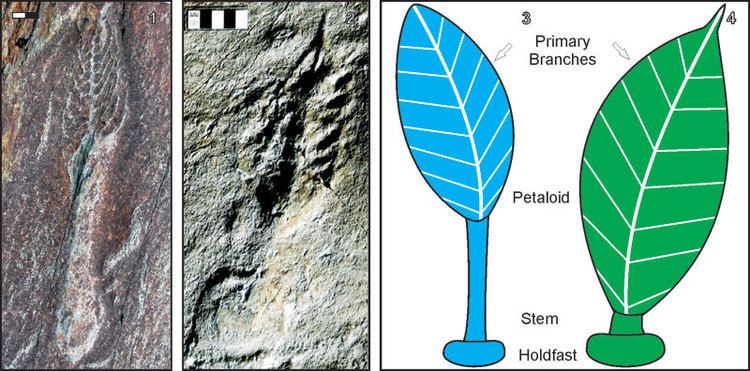Rank Genus | ||
 | ||
Similar | ||
the evolution of life charniodiscus
Charniodiscus is an Ediacaran fossil that in life was probably a stationary filter feeder that lived anchored to a sandy sea bed. The organism had a holdfast, stalk and frond. The holdfast was bulbous shaped, and the stalk was flexible. The frond was segmented and had a pointed tip. There were two growth forms: one with a short stem and fat frond, and another with a long stalk, elevating a smaller frond about 50 centimetres (20 in) above the holdfast. While the organism superficially resembles the sea pens (cnidaria), it is probably not a crown-group animal.

Charniodiscus was first found in Charnwood Forest in England, and named by Trevor D. Ford in 1958. The name is derived from the fact that Ford only described a holdfast consisting of a double concentic circle, his species being named Charniodiscus concentricus. Later it was discovered that a frond (Charnia masoni) was part of a closely related organism. Charnia differs in the branching structure in the frond.

Charniodiscus specimens are known from across the globe dating to around 565 to 555 million years ago.
Species are distinguished by the number of segments, whether or not there is a distal spine, and the shape ratio.

